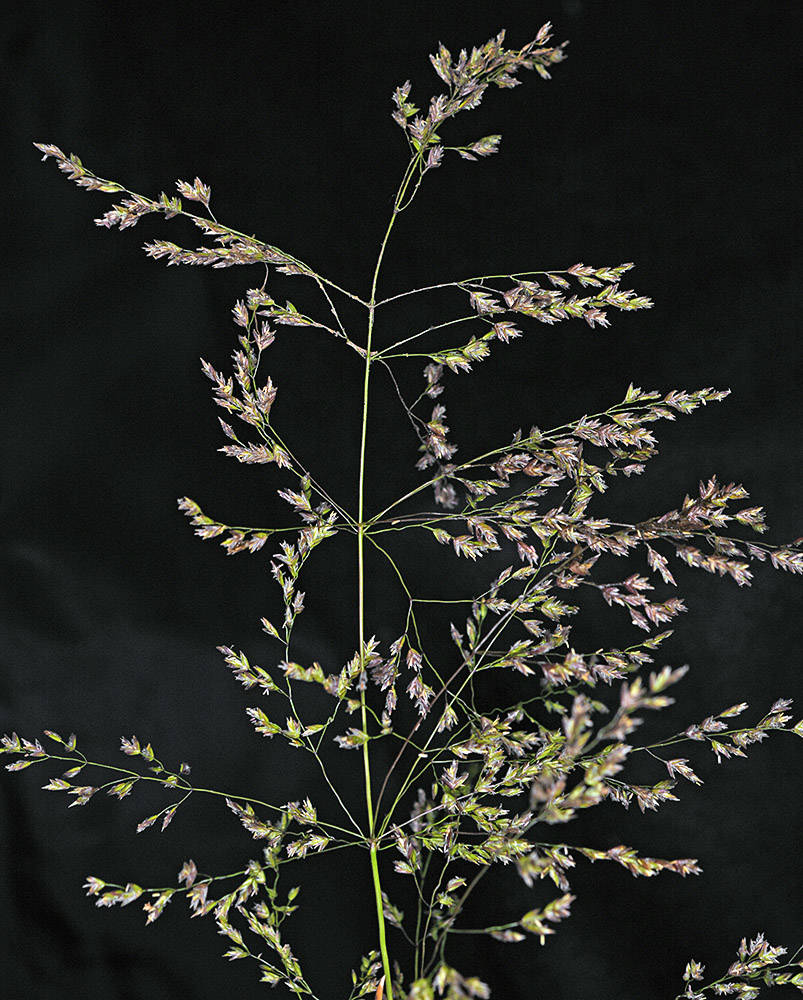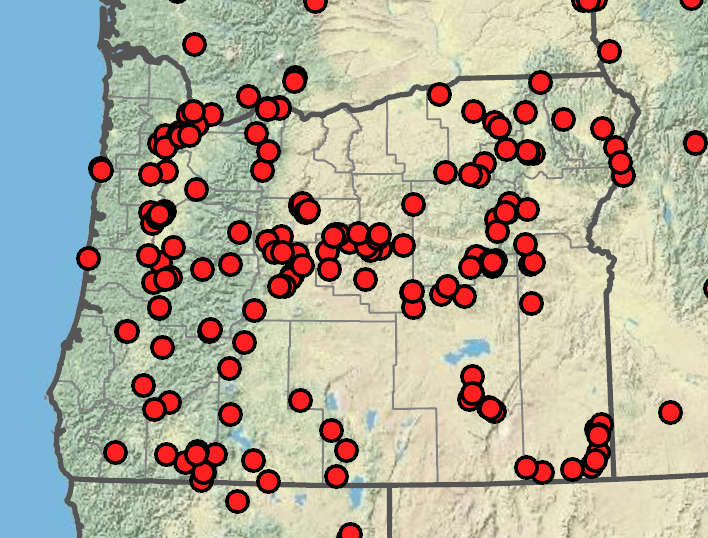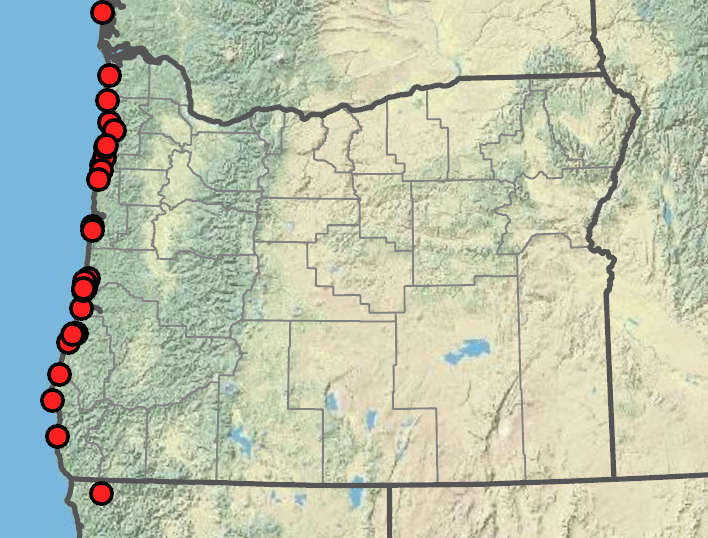Poa palustris
Poa confinis
fowl bluegrass
coastline bluegrass
nodes terete to slightly compressed;
proximal nodes often slightly swollen; the uppermost node usually at or above the middle of the culm.
slender;
nodes terete, 0–1 exserted.
extra- and intravaginal.
mainly intravaginal; some extravaginal.
sheaths closed to 20% of their length, bases of basal sheaths glabrous;
ligules (1)1.5– 6 mm, truncate to acute;
blades flat, 1.5–8 mm wide, usually several on the culm, steeply ascending or spreading to 80°; upper blades often lax.
sheaths closed 33–50% of their length; smooth, bases of basal sheaths glabrous;
collars smooth, glabrous;
ligules 0.5–1.5(2.2) mm, blades of tillers with upper surface moderately to densely scabrous or very short-hairy on and between the veins;
cauline blades involute, mostly filiform, 0.5–1(1.5)mm wide;
lower surfaces smooth;
upper surfaces sparsely scabrous on and between the veins; uppermost blade (0.5)1–5 cm long.
lax, eventually open, sparsely to moderately congested; (9)13–30(41)cm, generally 33–50% as broad as long at maturity;
spikelets 25–100+;
branches initially erect, eventually widely spreading to slightly reflexed, fairly straight; slender, 4–15 cm, 33–50% of the panicle length, 2–9 per node.
erect; ovoid, moderately to loosely congested, 1–5(7)cm;
spikelets fewer than 50;
branches erect to ascending, slightly lax, 0.5–3 cm, 1–2 per node.
narrowly to broadly lanceolate, 3–3.5 times as long as wide, 3–5 mm;
florets (1)2–5;
rachilla internodes mostly less than 1 mm.
to 3 times as long as wide; compact, 3–6(8)mm;
florets 2–5;
rachilla internodes glabrous or sparsely softly puberulent.
tapering from the base or lanceolate, distinctly keeled;
keels smooth or sparsely scabrous;
lower glumes 3-veined; long tapered to a slender point, 6.4–10 times as long as wide.
slightly unequal;
keels smooth or scabrous;
lower glumes 2–4 mm long, 1–3-veined; about 67% as long as the lowest lemma;
upper glumes 2.9– 5 mm long.
perennial; g ynodioecious, 7–30(35)cm tall, densely to loosely tufted, rhizomatous and stoloniferous;
rhizomes and stolons to 100 cm long.
with sparse; diffuse; cobwebby hairs 1–2 mm, infrequently glabrous.
lanceolate, 2.5– 4(4.5)mm, distinctly keeled, moderately to densely finely scabrous, glabrous throughout or keels and sometimes marginal veins proximally sparsely softly puberulent;
margins narrowly scarious;
tips acute.
vestigial and 0.1–0.2 mm or functional and 1.5–2 mm.
Poa palustris
Poa confinis
Moist meadows, shorelines, ditches, forests, disturbed areas. 0–2600m. BR, BW, Casc, Col, ECas, Lava, Owy, WV. CA, ID, NV, WA; throughout most of Canada and US; circumboreal. Exotic?
Poa palustris has an open inflorescence, small lemmas and an open growth form produced by culms that often branch above the base. Poa nemoralis differs in having short, truncate ligules. Poa palustris from drier sites can be similar to P. interior, which has more lax leaf blades, calluses with sparse, short hairs, wider hyaline lemma margins and straight to slightly curved lemma keels. Poa interior has not been documented in Oregon. Both native and introduced populations of Poa palustris exist in North America, and Oregon plants have generally be considered introduced. However, some populations may be native.
Coastal sand dunes and stabilized sandy soil, occasionally edges of coastal forests. 0–50m. Est. CA, WA; north to British Columbia. Native. 2n=42.
Poa confinis is a rhizomatous grass that often puts up shoots in clusters. It grows in coastal sandy habitats. Poa macrantha grows in the same habitat but has much larger lemmas and inflorescences. Poa pratensis has long hairs on the lemma keels and marginal veins and cobwebby callus hairs that arise as a tuft on the dorsal surface, sometimes also with two additional tufts by the marginal veins.
Rob Soreng, Barbara Wilson, Richard Brainerd, Nick Otting
Rob Soreng, Barbara Wilson, Richard Brainerd, Nick Otting
- Local floras:
BC,
CA,
OR,
WA
- Local Web sites:
CalFlora,
CalPhotos,
Flora NW,
PNW Herbaria
WildflowerSearch
iNaturalist (observations)
USDA Plants Database
- LBJ Wildflower Center
- SEINet
- Plants of the World Online
- Encyclopedia of Life
- Wikipedia
- Google Image Search
- Local floras:
BC,
CA,
OR,
WA
- Local Web sites:
CalFlora,
CalPhotos,
Flora NW,
PNW Herbaria
WildflowerSearch
iNaturalist (observations)
USDA Plants Database
- LBJ Wildflower Center
- SEINet
- Plants of the World Online
- Encyclopedia of Life
- Wikipedia
- Google Image Search




